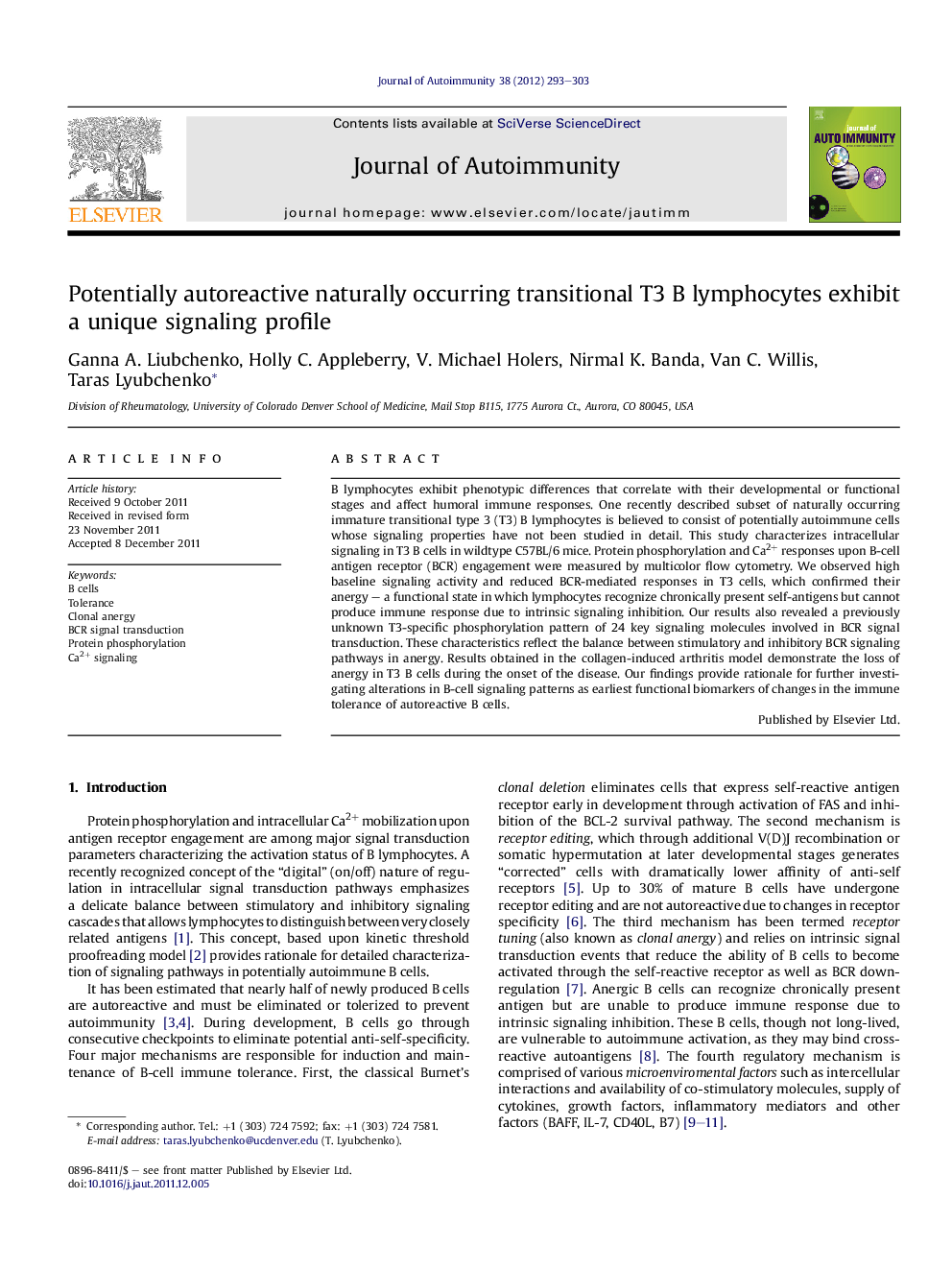| Article ID | Journal | Published Year | Pages | File Type |
|---|---|---|---|---|
| 3367987 | Journal of Autoimmunity | 2012 | 11 Pages |
B lymphocytes exhibit phenotypic differences that correlate with their developmental or functional stages and affect humoral immune responses. One recently described subset of naturally occurring immature transitional type 3 (T3) B lymphocytes is believed to consist of potentially autoimmune cells whose signaling properties have not been studied in detail. This study characterizes intracellular signaling in T3 B cells in wildtype C57BL/6 mice. Protein phosphorylation and Ca2+ responses upon B-cell antigen receptor (BCR) engagement were measured by multicolor flow cytometry. We observed high baseline signaling activity and reduced BCR-mediated responses in T3 cells, which confirmed their anergy – a functional state in which lymphocytes recognize chronically present self-antigens but cannot produce immune response due to intrinsic signaling inhibition. Our results also revealed a previously unknown T3-specific phosphorylation pattern of 24 key signaling molecules involved in BCR signal transduction. These characteristics reflect the balance between stimulatory and inhibitory BCR signaling pathways in anergy. Results obtained in the collagen-induced arthritis model demonstrate the loss of anergy in T3 B cells during the onset of the disease. Our findings provide rationale for further investigating alterations in B-cell signaling patterns as earliest functional biomarkers of changes in the immune tolerance of autoreactive B cells.
► Anergic B cells recognize chronically present self-antigens but cannot produce immune response. ► Naturally occurring immature transitional type 3 (T3) B cells have anergic signaling phenotype. ► Discovered T3 subset-specific pattern in the phosphorylation of 24 major signaling proteins. ► Balancing of stimulatory/inhibitory signaling cascades maintains immune tolerance in T3 B cells.
